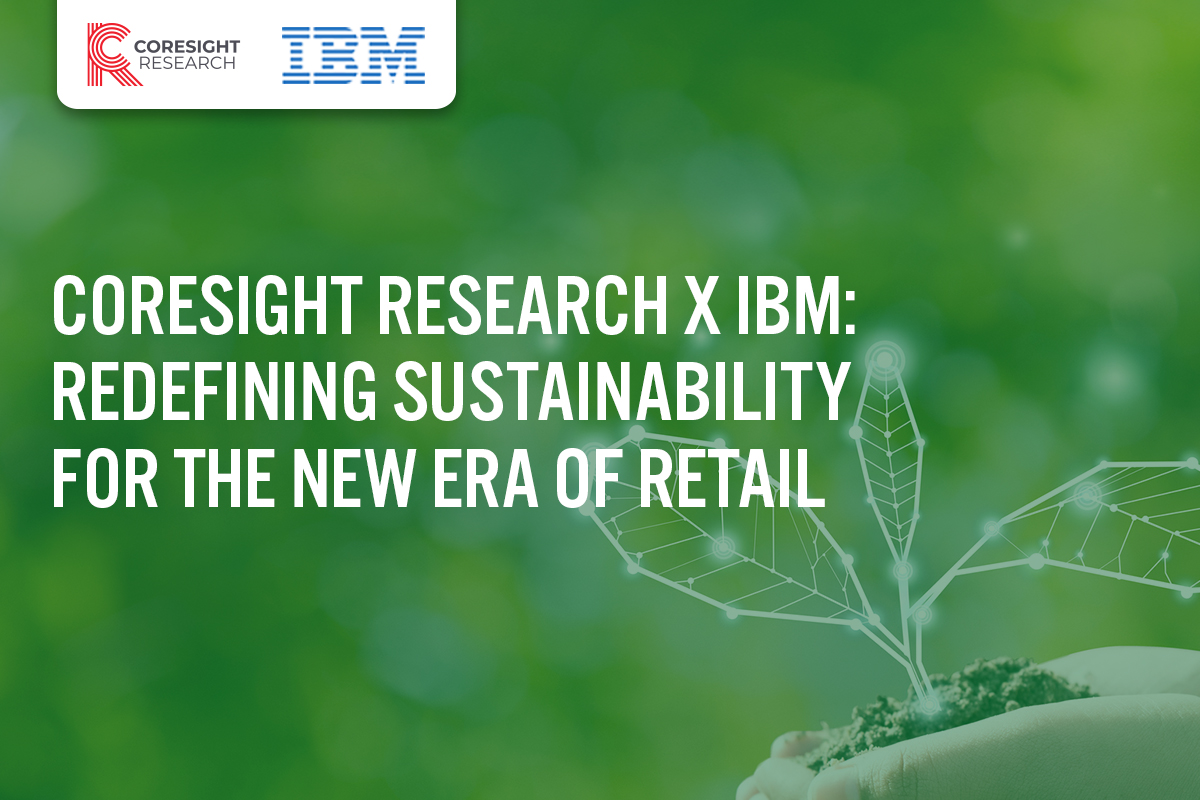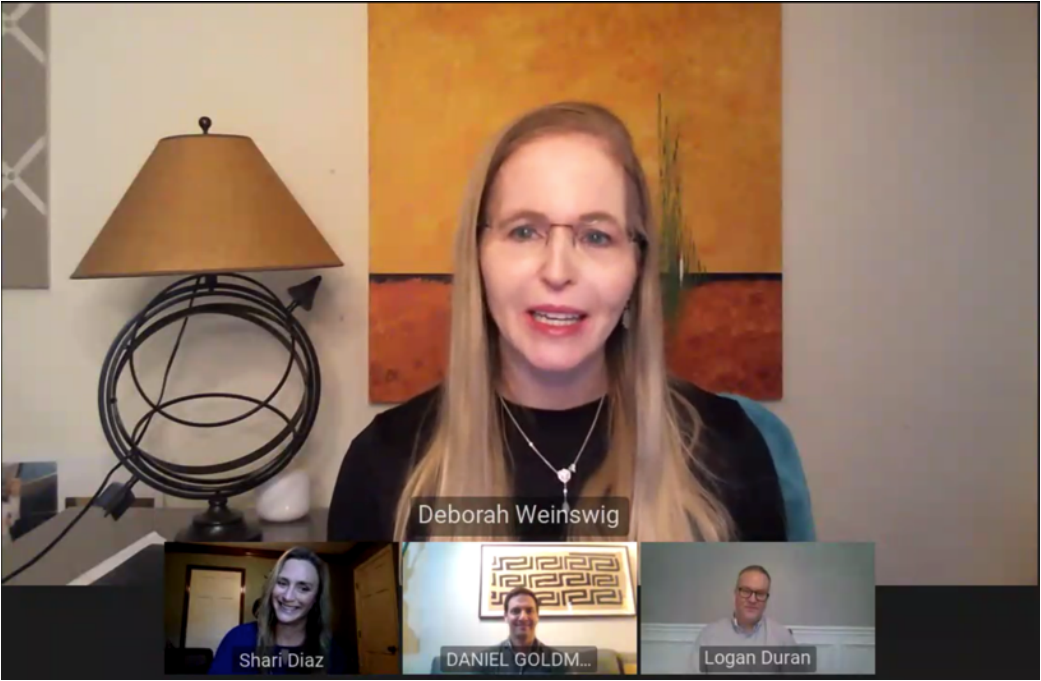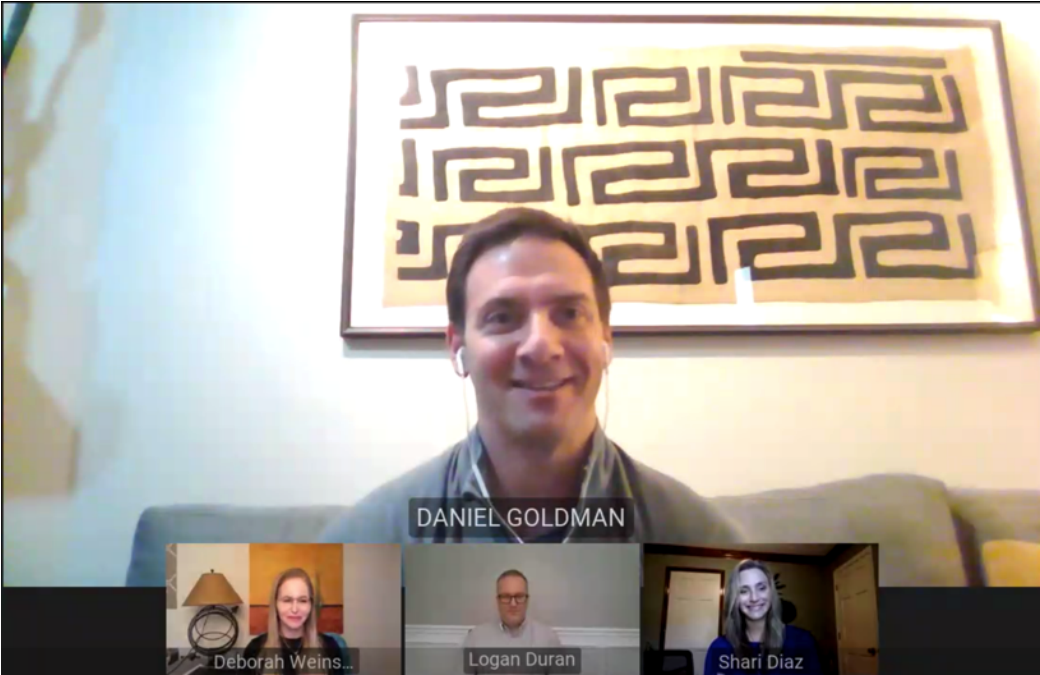
Nitheesh NH
We present an edited version of our conversation with Shari Diaz, Director of Innovation, Strategy and Operations at IBM Sterling; Dan Goldman, North Face Head of Strategy; and Logan Duran, Tapestry’s Director of Corporate Sustainability Strategy, from a webinar held on September 10,2020, to discuss how brands and retailers can frame their approach to sustainability. The panel discussion was hosted by Deborah Weinswig, Coresight Research Founder and CEO.
Coresight Research’s Sustainability Template: Introducing the EnCORE Framework
[caption id="attachment_116884" align="aligncenter" width="700"] Deborah Weinswig introduces Coresight Research’s EnCORE framework
Deborah Weinswig introduces Coresight Research’s EnCORE framework
Source: Coresight Research[/caption] Weinswig opened the discussion by introducing the EnCORE framework, a new sustainability template for retailers developed by Coresight Research. Over the past year, Weinswig and the Coresight Research team have increasingly focused on sustainability—aiming to provide retailers and brands with a foundation for shifting toward environmentally-friendly business models and practices. Weinswig introduced all five elements of the EnCORE framework, as summarized below: Shari Diaz advises retailers to get consumers involved in sustainability efforts.
Shari Diaz advises retailers to get consumers involved in sustainability efforts.
Source: Coresight Research[/caption] Diaz pointed to the ability of almost all retailers to address low-hanging fruit in the move toward sustainability. Even decisions as simple as the number of boxes to use for shipping can have a positive sustainability effect. For instance, retailers can offer an option on their site for customers to have their products shipped as fast as possible—often equating to separate delivery for each item—or if they would like to choose the more sustainable option and settle for slightly slower, combined shipping. Diaz believes that by putting such sustainability decisions to the consumer, companies can help the planet without losing profits or customers. Amazon already does this to a certain extent, Diaz noted, with its Amazon Day feature, where consumers can select one day of the week to receive all of their Amazon packages. Circular Production Models: Key to a Successful Sustainability Strategy [caption id="attachment_116886" align="aligncenter" width="700"] Dan Goldman discusses The North Face’s circular economy
Dan Goldman discusses The North Face’s circular economy
Source: Coresight Research[/caption] Goldman believes that The North Face and other brands and retailers are making strong, timely progress on creating sustainable, lasting products through circular production models. He cited consumer tendencies in the throes of the 2008 crisis to focus on great deals on apparel, rather than previous trends of flaunting expensive luxury goods—with sustainability positioned as the next great feature of apparel for consumers to show off. The North Face was one of the first apparel companies to introduce a lifetime warranty for its products, and the brand fixes and returns thousands of products to customers each year. Goldman also detailed the company’s new “Renewed” program, where the retailer takes a damaged or returned product, cleans it, fixes it, and then sells it. Sometimes, the company employs designers to upcycle one-of-a-kind pieces from these used goods that end up selling for significantly more than the original product. Duran applauded the recycling efforts undertaken by The North Face and added that Tapestry’s brands also offer repair services for their products. He sees a dual benefit to this emphasis on repairs and recycling—not only do these processes minimize environmental impacts by extending the product lifetimes, but they also create additional touch points between a customer and a retailer or brand as well as building consumers’ emotional attachment to products. Duran also discussed the role of rental models in the circular economy, citing experiments with “community libraries” of items, such as power tools, as an example of how retailers and communities can reduce product waste. Diaz suggested that retailers and consumers could reconceptualize their understanding of ownership and purchasing all together. Diaz said that perhaps we should think of more purchases as rentals or leases, much in the same way that we already lease cars or rent apartments. ThredUP, Rent the Runway and other services have already established this model in apparel. Diaz also cited the growth of the “furniture as a service” model as evidence of the potential opportunity associated with this change in mindset. Planet, People, and Profits: Retailers Need To Act Intelligently, Transparently and Quickly [caption id="attachment_116887" align="aligncenter" width="700"] Logan Duran speaks on the importance of accountability in sustainability efforts
Logan Duran speaks on the importance of accountability in sustainability efforts
Source: Coresight Research[/caption] Weinswig opened and closed the webinar by acknowledging that the sustainability fight will not be an easy one. The magnitude of the task means that it is imperative for retailers to measure incremental successes to ensure accountability to themselves, investors and consumers. This also enables retailers and brands to maintain their momentum by celebrating positive steps and ensure that they are optimizing their approach to sustainability. Measuring the success of sustainability efforts is not as easy as it may sound. Duran cautioned that across the industry, different retailers have widely varying standards for what qualifies as a sustainable product. Furthermore, many retailers use internal metrics to measure their own sustainability efforts, which even at the best-intentioned companies is likely be somewhat biased and may engender some skepticism among consumers. Considering that Gen Z consumers and employees are increasingly intolerant of companies that do not take sustainability efforts seriously, retailers must ensure that they accurately and objectively catalogue and advance their sustainability campaigns. Diaz recommends that retailers begin with low-hanging fruit, such as optimizing sustainability in packaging or switching to energy efficient light bulbs. All panelists agreed that sustainability is a journey, not a one-off action. Goldman emphasized the importance of creating a sustainable culture that permeates all levels and departments of apparel companies. To make consistent and impactful progress, sustainability must be woven into a company’s DNA and not be relegated to the status of a public relations-driven side project.
 Deborah Weinswig introduces Coresight Research’s EnCORE framework
Deborah Weinswig introduces Coresight Research’s EnCORE frameworkSource: Coresight Research[/caption] Weinswig opened the discussion by introducing the EnCORE framework, a new sustainability template for retailers developed by Coresight Research. Over the past year, Weinswig and the Coresight Research team have increasingly focused on sustainability—aiming to provide retailers and brands with a foundation for shifting toward environmentally-friendly business models and practices. Weinswig introduced all five elements of the EnCORE framework, as summarized below:
- Environmental Engagement—Understand how your supply chain and operations impact the environment and set a bold vision for how your company can become a leader in sustainability.
- Circular Models—Reuse materials to minimize waste and environmental impact.
- Optimize Operations—Utilize resource-efficient infrastructure and decarbonization technologies to reduce the environmental footprint of your business.
- Responsible Supply Chain—Ensure your supply chains are sustainable.
- Excellence in Reporting and Communicating—Build consumer and investor loyalty and trust by being transparent about your goals, achievements and failures.
 Shari Diaz advises retailers to get consumers involved in sustainability efforts.
Shari Diaz advises retailers to get consumers involved in sustainability efforts.Source: Coresight Research[/caption] Diaz pointed to the ability of almost all retailers to address low-hanging fruit in the move toward sustainability. Even decisions as simple as the number of boxes to use for shipping can have a positive sustainability effect. For instance, retailers can offer an option on their site for customers to have their products shipped as fast as possible—often equating to separate delivery for each item—or if they would like to choose the more sustainable option and settle for slightly slower, combined shipping. Diaz believes that by putting such sustainability decisions to the consumer, companies can help the planet without losing profits or customers. Amazon already does this to a certain extent, Diaz noted, with its Amazon Day feature, where consumers can select one day of the week to receive all of their Amazon packages. Circular Production Models: Key to a Successful Sustainability Strategy [caption id="attachment_116886" align="aligncenter" width="700"]
 Dan Goldman discusses The North Face’s circular economy
Dan Goldman discusses The North Face’s circular economySource: Coresight Research[/caption] Goldman believes that The North Face and other brands and retailers are making strong, timely progress on creating sustainable, lasting products through circular production models. He cited consumer tendencies in the throes of the 2008 crisis to focus on great deals on apparel, rather than previous trends of flaunting expensive luxury goods—with sustainability positioned as the next great feature of apparel for consumers to show off. The North Face was one of the first apparel companies to introduce a lifetime warranty for its products, and the brand fixes and returns thousands of products to customers each year. Goldman also detailed the company’s new “Renewed” program, where the retailer takes a damaged or returned product, cleans it, fixes it, and then sells it. Sometimes, the company employs designers to upcycle one-of-a-kind pieces from these used goods that end up selling for significantly more than the original product. Duran applauded the recycling efforts undertaken by The North Face and added that Tapestry’s brands also offer repair services for their products. He sees a dual benefit to this emphasis on repairs and recycling—not only do these processes minimize environmental impacts by extending the product lifetimes, but they also create additional touch points between a customer and a retailer or brand as well as building consumers’ emotional attachment to products. Duran also discussed the role of rental models in the circular economy, citing experiments with “community libraries” of items, such as power tools, as an example of how retailers and communities can reduce product waste. Diaz suggested that retailers and consumers could reconceptualize their understanding of ownership and purchasing all together. Diaz said that perhaps we should think of more purchases as rentals or leases, much in the same way that we already lease cars or rent apartments. ThredUP, Rent the Runway and other services have already established this model in apparel. Diaz also cited the growth of the “furniture as a service” model as evidence of the potential opportunity associated with this change in mindset. Planet, People, and Profits: Retailers Need To Act Intelligently, Transparently and Quickly [caption id="attachment_116887" align="aligncenter" width="700"]
 Logan Duran speaks on the importance of accountability in sustainability efforts
Logan Duran speaks on the importance of accountability in sustainability effortsSource: Coresight Research[/caption] Weinswig opened and closed the webinar by acknowledging that the sustainability fight will not be an easy one. The magnitude of the task means that it is imperative for retailers to measure incremental successes to ensure accountability to themselves, investors and consumers. This also enables retailers and brands to maintain their momentum by celebrating positive steps and ensure that they are optimizing their approach to sustainability. Measuring the success of sustainability efforts is not as easy as it may sound. Duran cautioned that across the industry, different retailers have widely varying standards for what qualifies as a sustainable product. Furthermore, many retailers use internal metrics to measure their own sustainability efforts, which even at the best-intentioned companies is likely be somewhat biased and may engender some skepticism among consumers. Considering that Gen Z consumers and employees are increasingly intolerant of companies that do not take sustainability efforts seriously, retailers must ensure that they accurately and objectively catalogue and advance their sustainability campaigns. Diaz recommends that retailers begin with low-hanging fruit, such as optimizing sustainability in packaging or switching to energy efficient light bulbs. All panelists agreed that sustainability is a journey, not a one-off action. Goldman emphasized the importance of creating a sustainable culture that permeates all levels and departments of apparel companies. To make consistent and impactful progress, sustainability must be woven into a company’s DNA and not be relegated to the status of a public relations-driven side project.